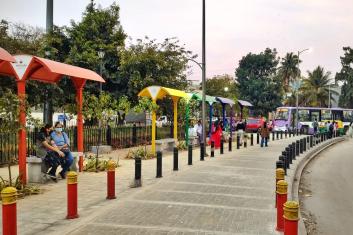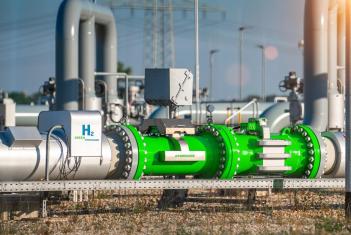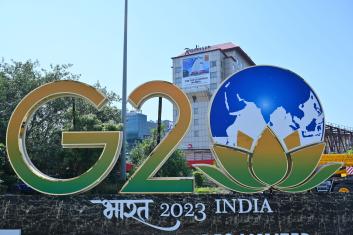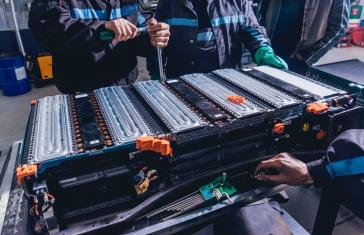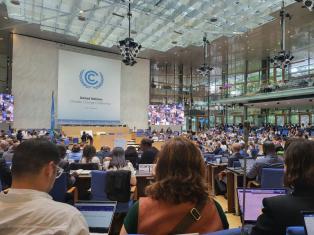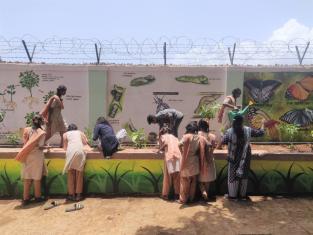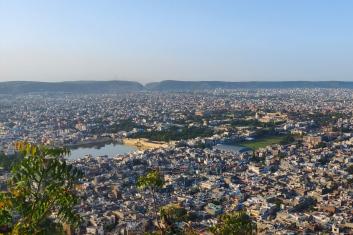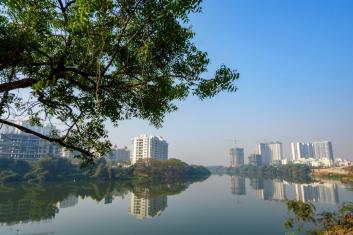Blogs
The blogs are part of WRI India’s mission to provide unbiased, expert analysis on the most important environmental issues facing the world today.
In today’s rapid-fire, fragmented information culture, we hope these insights will provide a measure of clarity to decision-makers worldwide.
-
Reimagining Indian Cities for Young Children: A Guide for Urban Governance
by , and -India accounts for nearly one fifth of the world’s annual child births and is enjoying a demographic dividend that is expected to peak around 2041. A supportive ecosystem and healthy physical environment are critical to helping our young children maximize their potential. Urban design and city planning, beyond just building playgrounds, play a crucial role in...
-
A Case for Livable Neighborhoods
by and -Earlier this month, the UK government dismissed ’15-minute cities’ – an urban planning concept that reimagines neighborhoods as self-contained spaces, offering residents all they need, in a 15-minute radius on foot or by bicycle. With the government taking up...
-
Delhi’s Air Quality Needs Data-Driven Action
by , and -The issue of Delhi's poor air quality resurfaces episodically in the public consciousness. It garners attention on social media, in newspapers and in scientific studies, largely during the winter months. During this period, Delhi's air quality index (AQI) drops from 'poor' to 'severe', across most monitoring stations.
The World Health Organization (WHO) recommends air quality standards with limits on air pollutant concentration,...
-
Why are Hydrogen Hubs Crucial for Accelerating Green Hydrogen Adoption?
by and -This blog post is the first in a two-part series on the relevance of hydrogen hubs and key elements for their development. This part explores the significance of hydrogen hubs and their potential for accelerating the adoption of green hydrogen.
India currently consumes around 5 million metric tons (MMT) of hydrogen annually, of which 99% is used for petroleum refining and ammonia production. Most of this is grey hydrogen, meaning that it is produced from...
-
G20 Highlights: Climate Finance, Just Transition and Food Security
by -The G20 Leaders’ Summit that recently concluded in New Delhi released its much-anticipated G20 New Delhi Leaders’ Declaration, recognizing climate change, energy transition, and food and nutrition security as some of the key points of discussion under its preamble, For the Planet, People, Peace and Prosperity, indicating its perspectives and priorities. The G20, comprising the world’s most powerful economies, enjoys tremendous influence in matters of development....
-
Decoding the Economic Viability of Lithium-Ion Battery Recycling
by and -As the number of electric vehicles on Indian roads increase, a surge in discarded lithium-ion batteries (LIBs) is expected, underscoring the urgent need for a robust recycling ecosystem. This blog looks at the economic feasibility of a large-scale recycling unit and makes the case for the development of a circular economy.
Under its G20 Presidency, India has launched the Resource Efficiency and Circular Economy Industry Coalition (RECEIC) for global sustainable environmental impact. To further promote...
-
The Road to COP28: Key Developments from the UNFCCC Climate Change Conference
by , , and -Representatives from over 100 countries that have signed the Paris Agreement gathered in Bonn, Germany from 5 June 2023 to 15 June 2023 for the Bonn Climate Change Conference (SB58). This was the 58th session of the Subsidiary Body for Scientific and Technological Advice (SBSTA) and the Subsidiary Body for Implementation (SBI) under the United Nations Framework Convention on Climate Change (UNFCCC). This year’s conference was built on the mandates that emerged from COP27 in Egypt last year and is seen as a precursor to COP28.
Steffi Olickal spoke with members of the WRI India...
-
Can Greening be Prioritized in Vulnerable Neighborhoods?
by and -This blog highlights the challenges and opportunities for greening for climate action in low-income communities by looking at three neighborhoods in Mumbai: Lallubhai compound, Cheeta camp and Ambujwadi.
“I live in an area that has barely any trees. There is little shade and during very hot days, I feel tired and dizzy,” sighs Priya Shinde, a resident of Lallubhai compound. Every day, Priya walks to the nearby school where she teaches. There is no respite from the heat at the school either, as the children and the staff bear the brunt of hot metal roofs, little to no...
-
Pink City to Green City: Building Jaipur’s Climate Resilience through Nature-based Solutions
by and -The second blog in our two-part blog series illustrates four pilot community based ‘Nature-based Solutions’ (NbS) interventions in Jaipur that address climate induced heat stress and water scarcity. The first blog in the series introduced the context for the project and, highlighted five key strategies for implementing NbS in the city.
India experienced...
-
India’s First Water Body Census: Connecting the Missing Links
by , and -India is expected to be the most severely affected nation with global water scarcity projected to increase from 933 million in 2016 to 1.7-2.4 billion people in 2050. Ranked 13th amongst the most water-stressed nations in 2019, with just 4% of the world’s water reserves and...


